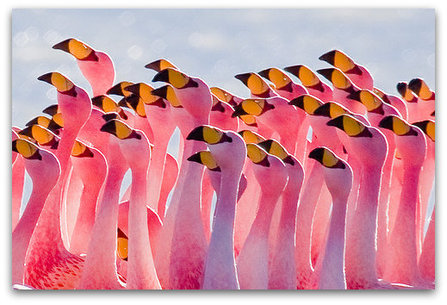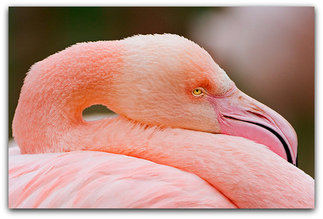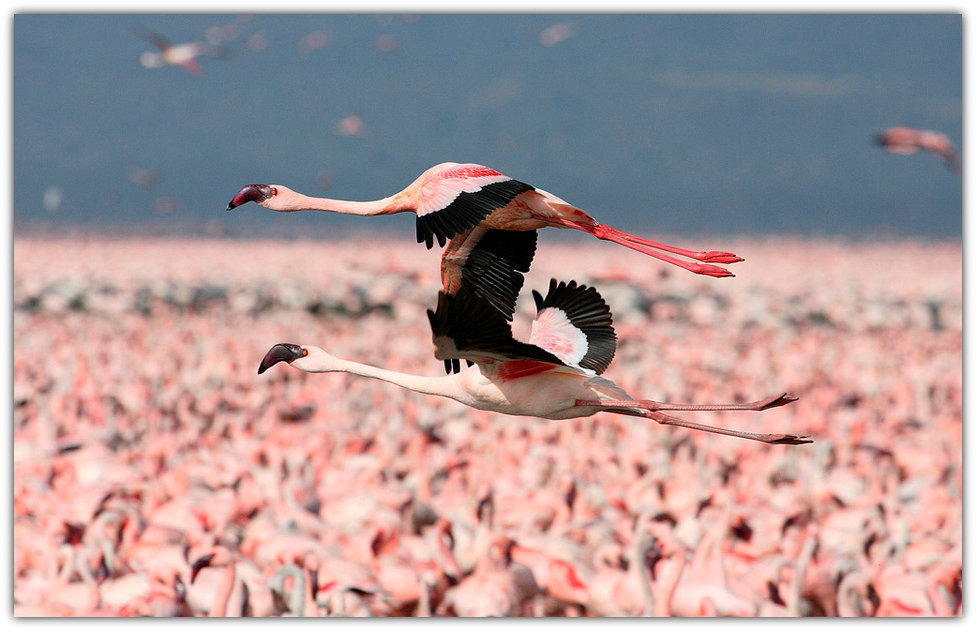What animal has long legs? Here’s a hint: It turns pink as it grows up. If you guessed a flamingo you’re right! Flamingos are amazing animals with all sorts of things for you to learn about them. I’m going to tell you about the type of animal they are, their size, its food their predator and their special features and finally their life cycle.
The first thing I want you to know is the type of animal a flamingo is. A flamingo is a bird, that means it is covered in feathers. They are social animals. That means they live in groups called colonies. A colony can have thousands of members. There are three main types of flamingos. The greater, the lesser and the Chilean.
 by Pedro Szekely
by Pedro Szekely Flamingos are medium sized animals. They can be three to five feet tall, which is the same as 150 centimeters. That is tall for a bird! They are tall because of their long legs. Their long legs let them go into deeper water than most birds. Their wingspan varies and is between 39 and 65 inches depending on the species.
A flamingo lives in a special habitat. Their habitat is usually muddy. The first place a flamingo lives is in lakes that have little movement in the water. They also live in marshes. A marsh is a soggy, muddy piece of land. That is a perfect place for a flamingo's nest since they make their nests out of mud.
A flamingo lives in a special habitat. Their habitat is usually muddy. The first place a flamingo lives is in lakes that have little movement in the water. They also live in marshes. A marsh is a soggy, muddy piece of land. That is a perfect place for a flamingo's nest since they make their nests out of mud.
 by Tambako The Jaguar
by Tambako The Jaguar Flamingos have many special features. They have long legs to go into deep water, their bills are curved and they have combs to strain the water, mud or sand from their food. The feathers on a flamingo are not naturally pink. The white feathers they are born with change colors because of the pink shrimp they eat. Flamingos in Africa have black tipped feathers, this helps to camouflage them from their predators. Flamingos have webbed feet like a duck to help them in the water.
Flamingos have a unique life cycle. The female lays egg in their nest and after about 30 days the egg hatches. Young flamingos leave the nest after about 5 days, forming small groups to live in until they are two weeks old. They keep going back to the nest to eat from their parents. Then they learn to find food on their own creche or group. Flamingos can live 20-30 years in the wild. If you want to learn more about Flamingos try observing them in their natural habitat or your local zoo. Luckily flamingos are not endangered as of now, but they could be at any time, so be sure to help keep lakes and nature clean.

 RSS Feed
RSS Feed



